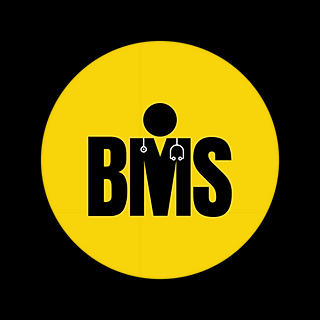Unchartered Territory: Working as a Final Year During COVID-19
- Black Medical Society (BMS)
- Jun 18, 2020
- 4 min read
Updated: Jun 20, 2020
FY0. Sub-FY1 (Foundation Year 1). Senior-clinical assistant. These are just some of the titles
being used to refer to final-year medical students around the country currently working for the NHS in unprecedented circumstances. These titles attempt to capture what can often feel like a ‘limbo’ between medical student and junior doctor for those of us still awaiting a formal graduation. As I approach my sixth week of working in this role, I find myself reflecting upon what I’ve learnt from my experiences so far and my thoughts on the situation going forward.
A Warm Welcome
Rewind to March 13th, 2020; the day I received the email informing me that my current placement (at a GP practice) would be stopped and I would instead be joining the workforce at a local hospital in the fight against COVID-19. Whilst excited by the prospect of a new challenge, I couldn’t help but be anxious. Was I ready? Would I be expected to perform procedures I wasn’t completely confident doing yet? Would I myself catch COVID-19? As uncertain as I was on receipt of this news, the majority of my fears were alleviated by the amazing support and openness of the staff upon our arrival. It seemed like everyone was aware of our circumstance and glad to have us join the team. Doctors expected and valued our input and nurses requested and respected our opinions. No longer did I have that ‘surplus to requirements’ feeling I sometimes felt as a medical student. Having previously resided on the fringes of the team, it was refreshing to now feel like I was making a meaningful contribution.
Poorly Protective Equipment?
Despite the fulfilment the job itself was giving me, the ever-changing situation with regards to PPE (personal protective equipment) was a persisting concern. The hospital I work at has implemented a colour-coding system for the wards denoting risk. I was initially assigned to a green ward (low-risk) for my first three weeks for which PPE was a surgical face mark in general ward areas and a plastic apron and gloves in patient bays and side rooms. Later on, the ward became yellow (moderate-risk) as numerous patients underwent testing. At this time, those performing the tests were equipped with gloves, a gown, visor and FFP3 mask. When I was later transferred to a different ward two weeks later, those performing the testing were equipped only with an apron, gloves, surgical facemask and visor. Within weeks, gowns and FFP3 masks had become a rarity on the wards and the definition of ‘adequate protection’ had grown increasingly compromised. Whilst we couldn’t allow its scarcity to adversely influence patient care, I couldn’t help but ponder the infective risk this posed to us on the front line.
Testing times
Consequently, testing for all front line staff was a widely expressed desire. As national lockdown measures tightened, the risk of healthcare workers contracting the disease and growing ill (or being asymptomatic and furthering its spread) posed a growing threat against stopping the disease. Also, with such a heavy workforce demand, the need to verify the disease status of key workers in order for them to stay working was important. Some local trusts identified this risk early and established testing for all workers who were symptomatic or living with people who were. Other trusts however, only implemented this recently; potentially delaying the return of needed key workers in the meantime. This was likely due to a shortage of testing materials; highlighting how, logistically, the NHS was and is still struggling to keep up with the demands of this contagious disease.
Learning on the job
When weighing up the pros and cons of undertaking this position, a great motivator was the anticipation of gaining masses of experience. What better way to prepare for my foundation years as a doctor other than working in an adjacent role in the middle of a pandemic? Fortunately, the reality exceeded my expectations. This period has been a great opportunity to practice and perfect my clinical skills, documentation and diagnostic prowess; all the while having a great support system who understand that you’re still learning the trade. Having fellow Junior Doctors on the team willing to advise you if needed whilst being careful not to undermine you has been invaluable. Often their early experiences mirrored ours, so their words of wisdom provide the perfect template for us to learn from. It has been great to transition from potentially inconveniencing them with requests to ‘sign off our competencies’ to genuinely being able to assist and help relieve their workload.
Looking ahead
All in all, working as a ‘sub-FY1’ for the past five weeks has been a positive experience. Although the quick transition to increased responsibility and workload has posed some challenges, this has been outweighed by the support and guidance I have received. It has been inspiring to witness the resilience of the NHS staff that I work with and touching to see how the praise from the public has fed into this. As we move ‘past the peak’ in the coming weeks I look forward to seeing the number of cases fall and things start to return to normality. The prospect of less bad news being broken and families being reunited with their admitted relatives is an exciting one to work towards and I look forward to being a part of it.
Article written by Dr Stephen Osei-Osafo, junior doctor in the West Midlands





Comments